Japan
Wood Products Prices
Dollar Exchange Rates of 10th
September
2018
Japan Yen 111.14
Reports From Japan
¡¡
Double disaster rocks Japan
After weakening in the first quarter of 2018 the Japanese
economy returned to growth in the second quarter growing
by almost 2% on the back of better than expected
consumer spending and private sector capital spending.
However, the pace of growth is sure to be dented due to
two major natural disasters in early September.
Typhoon number 20 (Jebi) made landfall in western Japan
and was the strongest tropical storm in 25 years. The storm
caused widespread power failures and flooding. The
region¡¯s main airport was flooded and the storm almost
brought Japan¡¯s second city, Osaka, to a standstill.
Within a few days of the typhoon the northern island
of Hokkaido suffered a major earthquake which triggered
landslides across a wide area. 41 people died.
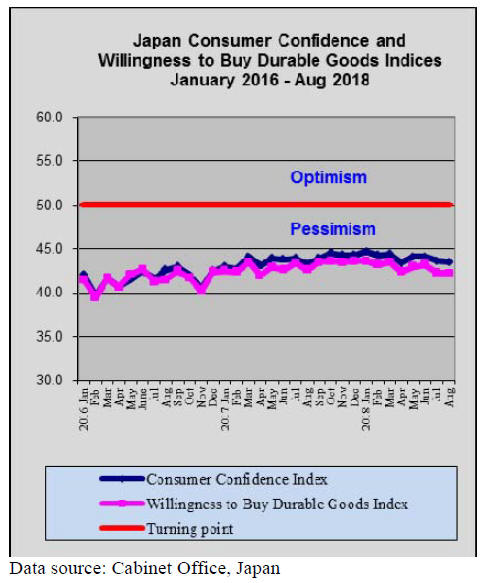
Yen tips to 112 against the US dollar
The yen strengthened briefly following the release of
revised GDP for the April-June which, on projections,
would lead to an annualised growth of 3%, much faster
than the estimate of around 2% growth made last month.
But, towards mid-month the yen weakened once more
falling to below 112.00 to the US dollar. The dollar
returned to the yen 112 mark as it gained strength after
Turkey lifted interest rates but any further yen weakness
was slowed when the Japanese Prime Minister made
reference in a speech to the Bank of Japan unwinding its
ultra-easy monetary policy.
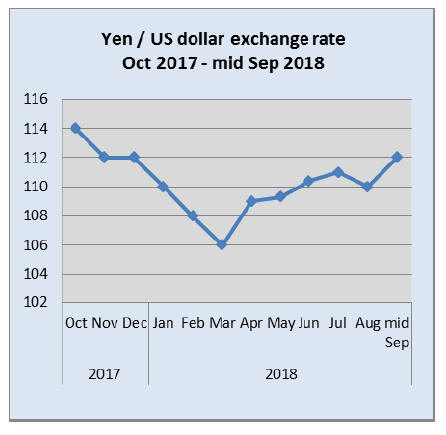
Home prices in Tokyo appear to have peaked
Over the past 12 months there has been a steady rise in
prices for existing apartments in the major cities across
Japan. Apartment prices in Tokyo rose almost 4% in the
second quarter of 2018 building upon the 4.5% rise in the
first quarter and the 3% jump in the final quarter of 2017.
Recent surveys seem to suggest that prices in Tokyo have
topped out as there was a slight fall in the third quarter of
2018.
In the case of new apartments in Tokyo prices have risen
even faster with a 9% rise recorded in the second quarter
of 2018. The Land Institute of Japan has reported that
existing apartment sales in Tokyo fell in the second
quarter while sales of existing detached houses in Tokyo
also fell. This comes on top of declining housing starts in
the second quarter.

Furniture imports
The combined value of Japan¡¯s wooden office kitchen and
bedroom furniture imports in the first half of 2018 was
higher than in the same period in 2017. Kitchen and
bedroom furniture imports were up 12% and 5%
respectively. It was only wooden office furniture imports
which declined, dropping 11% in the first half of 2018
compared to the first half of 2017.
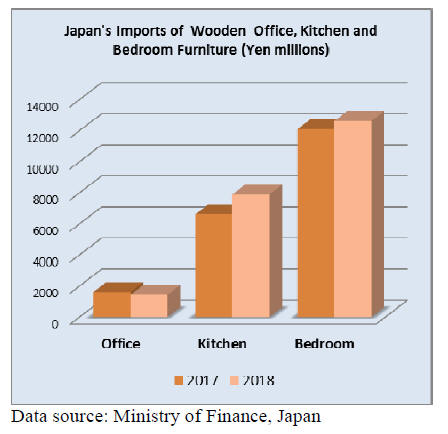
There is a vast difference in the value of Japan¡¯s
imports
of wooden office, kitchen and bedroom furniture. The
value of bedroom furniture imports are the highest and are
almost double that of kitchen furniture imports and 4-5
times the value of wooden office furniture imports.
After the slight rise in kitchen and bedroom furniture at
the beginning of the year any upward momentum lost
steam and for the three months to June saw the value of
both kitchen and bedroom furniture trending flat. Year on
year the value of first six month 2018 kitchen furniture
have risen.
First half 2017/18 office furniture imports (HS 940330)
The pattern of 2018 imports of wooden office furniture is
markedly different from that observed in 2017 and the
steady fall in the value of wooden office furniture during
2018 is clear from the chart below. This decline
corresponds well with the decline in business sentiment
which started to be reported in the second quarter of 2018.
The Bank of Japan¡¯s Tankan survey showed that sentiment
amongst big manufacturers weakened for a second straight
quarter up to June. Analysts say the main reasons are the
rising costs of raw materials and labour and US
protectionism which could hurt Japan¡¯s export-dependent
economy.
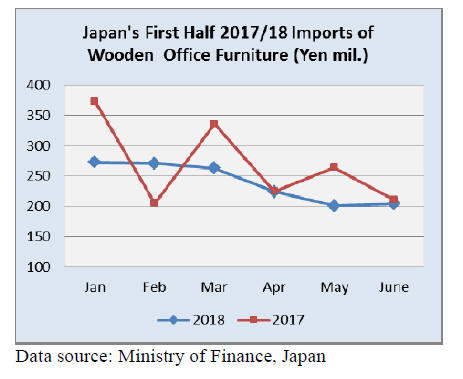
June imports
Year on year Japan¡¯s June 2018 imports of wooden office
furniture were down 3%. The decline in June imports
marked the third monthly fall driving down total second
quarter imports sharply.
The top three shippers of wooden office furniture to Japan
in June, China, Portugal and Poland accounted for over
60% of all wooden office furniture imports. Imports from
Italy in June were almost double the value of May imports.

First half 2017/18 kitchen furniture imports
The value of Japan¡¯s wooden kitchen furniture imports in
the first half of 2018 was some 12% higher than in the
same period in 2017. After a good start to the early part of
the first quarter exports fell but picked up towards the end
of the second quarter.
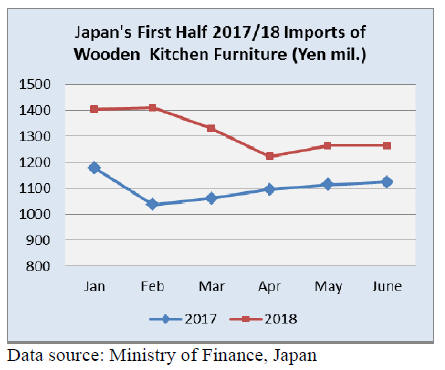
Kitchen furniture imports (HS 940340)
As has been the case since the beginning of 2018, three
suppliers accounted for most of Japan¡¯s wooden kitchen
furniture imports; the Philippines (48%), Vietnam (36%)
and China (9%). In June, imports of wooden kitchen
furniture from Chinese shippers fell 27% driving down
their June market share by about half.
Year on year, June imports of wooden kitchen furniture
were up 12% but were flat compared to the value of June
imports.

First half 2017/18 bedroom furniture imports
Despite the sharp decline in the value of first quarter 2018
imports of wooden bedroom furniture, overall first quarter
imports were 5% higher than in the first quarter of 2017
having been given a boost by the startling value of imports
in May 2018.
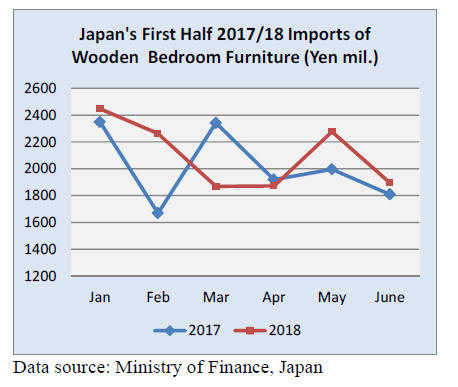
June bedroom furniture imports (HS 940350)
The rise in May imports of wooden bedroom furniture did
not carry over into June when there was a reversal in the
trend. Month on month June 2018 imports were 17%
down from levels in May however, year on year June 2018
imports were up 5%.
The top three shippers of wooden bedroom furniture to
Japan in June were, in order of value, China, Vietnam and
Thailand. In previous months the top three shippers
accounted for almost 90% of all wooden bedroom
furniture imports to Japan but in June the market share of
the top three slipped slightly, driven down by a rise in
imports of bedroom furniture from Poland.
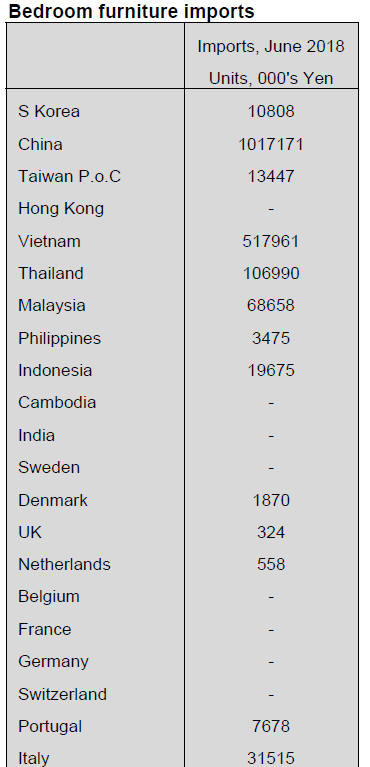 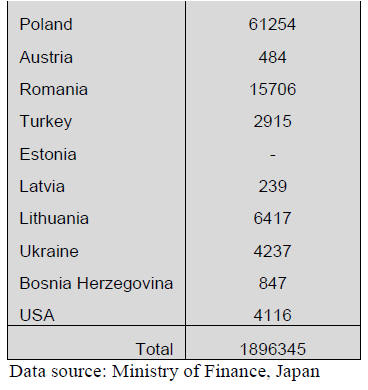
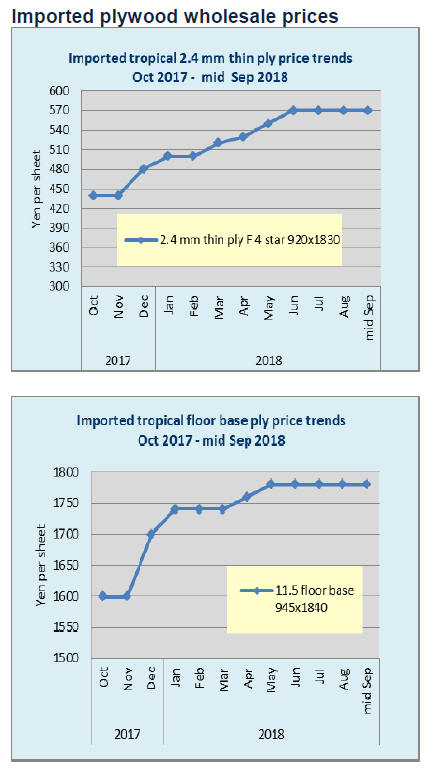 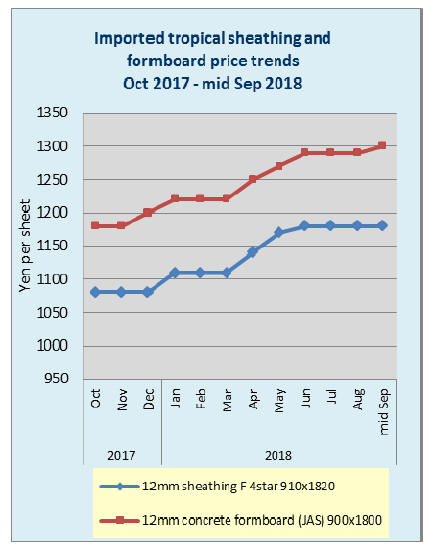
|